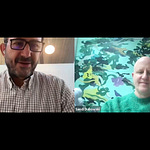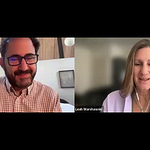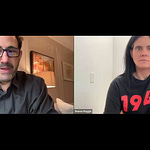YouTube has grown into a streaming behemoth that producers and distributors can no longer ignore, pulling over 10% of connected TV viewing. More than Netflix, Disney+, Max, or any other streamer. But filmmakers have long been wary of their professional content getting mixed in with creators and vloggers. What’s the best strategy for monetizing your content on YouTube?
In this discussion with Film Hub’s Alan d’Escragnolle we talk through the various different opportunities available for monetizing films and series on YouTube, including the fast-growing YouTube Movies and TV. We’ll dig into transparent earning numbers, and talk through the best strategies to capitalize on YouTube’s dominance.
For the full experience listen (or watch) the full webinar - but here are some essential highlights:
Jon: What is AVOD, SVOD, TVOD?
Alan: AVOD, SVOD, and TVOD are three different license types, or ways that exhibitors can agree to license your film or show. You earn money in a different way from each.
AVOD or Ad supported streamers are usually free for the audience to watch, but feature ad breaks. They pay you based on how many ad viewers watch while streaming your content.
SVOD, or subscription video on demand requires viewers to subscribe to get access. As a licensee, you get paid a share of subscription revenue determined by how much your film is viewed in comparison to the rest of the library
TVOD, or transactional video on demand allows viewers to rent or purchase your film. You get paid a portion of every rental or purchase.
Jon - Why is AVOD important now and what has happened to TVOD?
Alan: There has been a huge surge in AVOD channel growth to the point that it’s become one of the more reliable revenue streams for most filmmakers. Audiences really want to watch for free! At the same time, the transactional market has slowed. Viewers are more comfortable streaming in other ways and there are fewer people browsing the Apple and Amazon stores looking for something to shell out their hard earned money for.
Jon: Why should YouTube be an important part of a filmmaker's strategy especially if they are concerned with monetization.
Alan: Filmmakers need to be looking for every possible income stream, and YouTube has gotten too big to ignore. Filmmakers have been scared of YouTube for a long time because it felt like giving away your film for free. But, the industry has changed, YouTube has changed, and there is a big opportunity here.
YouTube is the single biggest streamer, commanding over 10% of all viewing minutes, more than any other exhibitor.
It’s also taken over the living room with its investment in connected TV. Over 150M users in the US use YouTube on their connected TV.
YouTube’s Connected TV watch time has increased over 400% since 2021 and ad revenue has grown to over $3.34 Billion.
Jon: What are the different ways to monetize your films or series on YouTube?
Alan: 1. Upload yourself - If you have a monetized channel, you can upload yourself and hope to generate revenue. But unless you are Mr. Beast, you are probably leaving money on the table.
2. YouTube Movies and TV - The best opportunity on YouTube is YouTube Movies and TV. It’s a curated space for premium content. It’s harder to get licensed, but it gives you the best chance of earning big revenue. You have to go through a distributor to get licensed there.
3. Movie channels - There are a handful of premium free to watch Movie channels with really big followings. Some of them have tens of millions of subscribers and can turn real numbers. Filmhub has a relationship with all of these channels and if Movies and TV isn’t an option, this is usually our next move.
Jon: So, what is YouTube Movies and TV?
Alan: YouTube created YouTube Movies and TV a few years ago to make a safer place for professional filmmakers and studios to release their content on YouTube. It’s siloed off from the ‘upload anything’ section of the site. YouTube Movies and TV gets prime placement in the sidebar, search, on Connected TV and in YouTube Premium. So there are a lot of avenues pushing traffic towards it.
YouTube Movies and TV capitalizes on both AVOD revenues through ads and SVOD revenues through YouTube Premium. As viewers have become accustomed to finding YouTube Movies and TV, the revenues have really skyrocketed. We’re seeing an increase in licenses and in revenues for successful titles.
Jon: How is it different from other AVOD/SVOD services?
Alan: 1. Curation. YouTube Movies and TV is highly curated. They are looking for premium content with a different curatorial feel than the rest of YouTube. They work exclusively with a very small handful of preferred vendors, including Filmhub, to acquire titles.
To learn more, become a paid subscriber.
Listen to this episode with a 7-day free trial
Subscribe to 8 Above with Jon Reiss to listen to this post and get 7 days of free access to the full post archives.









